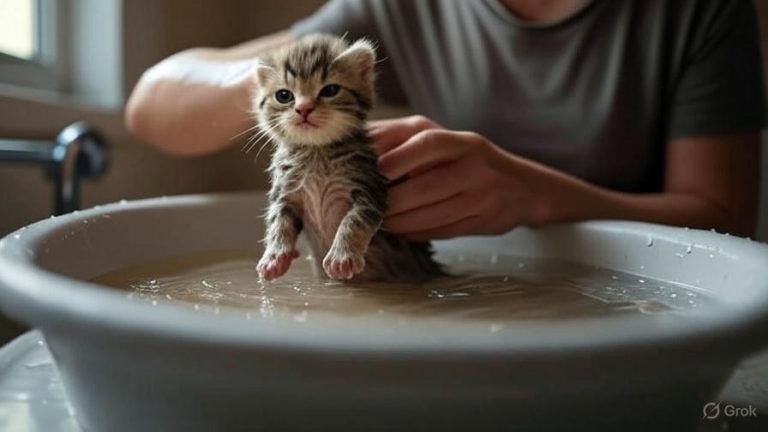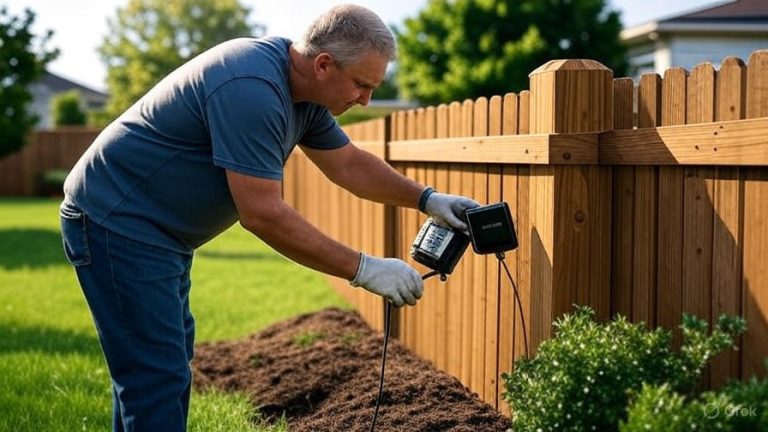How to Clean Tartar Off Dog’s Teeth?
Dog owners often overlook their pet’s dental health until yellow-brown buildup covers their furry friend’s teeth. Tartar accumulation can lead to serious health problems, including gum disease, tooth loss, and even heart complications. This comprehensive guide will teach you safe, effective methods to remove tartar from your dog’s teeth and maintain excellent oral hygiene.
What Is Tartar and Why Does It Form on Dog Teeth?
Tartar, also known as dental calculus, develops when plaque hardens on your dog’s teeth. This crusty, yellow-brown substance forms above and below the gum line, creating a rough surface that attracts more bacteria. The process begins when food particles and bacteria combine to form plaque, a sticky film that coats the teeth.
Within 24-72 hours, minerals from your dog’s saliva cause this plaque to calcify into tartar. Once tartar forms, regular brushing cannot remove it completely. The buildup continues to grow thicker and spreads across the tooth surface, eventually causing periodontal disease if left untreated.
Certain factors increase tartar formation in dogs. Small breeds face higher risks because their teeth sit closer together, creating tight spaces where food particles and bacteria accumulate. Age also plays a role, as older dogs typically have more tartar buildup than younger ones. Diet influences tartar development too – dogs eating primarily soft foods tend to accumulate more plaque than those consuming dry kibble.
Signs Your Dog Has Tartar Buildup
Recognizing tartar early helps prevent serious dental problems. Look for these warning signs during regular mouth examinations:
Yellow or brown crusty deposits along the gum line indicate tartar formation. These deposits feel rough to the touch and cannot be removed with a fingernail or cloth. Bad breath, medically called halitosis, often accompanies tartar buildup. While some dog breath is normal, persistently foul odors suggest bacterial overgrowth.
Red, swollen, or bleeding gums signal gingivitis, the early stage of gum disease caused by tartar irritation. Your dog might show discomfort while eating, favoring one side of their mouth, or dropping food frequently. Excessive drooling, pawing at the face, or reluctance to have their head touched can also indicate dental pain.
Advanced tartar buildup may cause loose teeth, visible pus along the gum line, or small bumps under the jaw indicating infected lymph nodes. These symptoms require immediate veterinary attention to prevent tooth loss and systemic infection.
Safe Methods to Remove Tartar at Home
Several home remedies can help soften and remove light tartar deposits. However, these methods work best for early-stage buildup and should complement, not replace, professional dental care.
Natural Remedies and DIY Solutions
Raw bones provide natural abrasive action that helps scrape away tartar. Offer raw beef or lamb bones that match your dog’s size – bones should be large enough that your dog cannot swallow them whole. Never give cooked bones, which can splinter and cause serious injuries. Supervise bone chewing sessions and remove bones when they become small enough to swallow.
Coconut oil contains antimicrobial properties that fight bacteria in your dog’s mouth. Apply a small amount to your finger and gently rub it on your dog’s teeth and gums. Most dogs enjoy the taste, making this an easy addition to your dental care routine. Start with small amounts to avoid digestive upset.
Apple cider vinegar helps dissolve mineral deposits in tartar. Mix one teaspoon of apple cider vinegar into your dog’s water bowl twice weekly. The acidic nature of vinegar gradually softens tartar, making it easier to remove through brushing and chewing.
Dental chews and toys designed for tartar removal provide mechanical cleaning action. Look for products approved by the Veterinary Oral Health Council (VOHC), which tests and approves effective dental products. These chews work by scraping against teeth as your dog chews, helping remove plaque and light tartar deposits.
Using Dental Tools and Equipment
Dog-specific dental tools can help remove tartar when used carefully. Dental scalers designed for pets have curved tips that follow tooth contours. However, improper use can damage enamel or injure gums, so proceed with extreme caution.
Before using any dental tools, allow your dog to sniff and investigate them. Start by gently lifting your dog’s lips and examining their teeth. Work gradually to build tolerance for mouth handling. Never force tools into your dog’s mouth or use excessive pressure.
When using a dental scaler, hold it at a 45-degree angle to the tooth surface. Gently scrape away from the gum line using light, controlled movements. Focus on visible tartar deposits and avoid scraping below the gum line, which requires professional training and equipment.
Ultrasonic dental cleaners designed for home use vibrate at high frequencies to break apart tartar deposits. These devices require patience and practice to use effectively. Follow manufacturer instructions carefully and stop immediately if your dog shows signs of distress.
Professional Tartar Removal Options
Veterinary dental cleaning remains the gold standard for tartar removal. Professional cleaning addresses tartar both above and below the gum line, areas impossible to clean thoroughly at home.
Veterinary Dental Cleaning Procedures
Professional dental cleaning requires general anesthesia to ensure complete tartar removal and patient safety. Your veterinarian will perform pre-anesthetic bloodwork to evaluate your dog’s organ function and anesthetic risk. This testing helps identify potential complications before the procedure.
During the cleaning, veterinary technicians use ultrasonic scalers to remove tartar from all tooth surfaces. They clean beneath the gum line, where dangerous bacteria accumulate and cause periodontal disease. Hand scaling follows ultrasonic cleaning to remove any remaining deposits.
Polishing smooths tooth surfaces after tartar removal, making it harder for new plaque to adhere. Your veterinarian will examine each tooth for decay, fractures, or other problems requiring treatment. Dental X-rays may reveal hidden issues like tooth root abscesses or bone loss.
Post-cleaning care includes pain management and antibiotic therapy if needed. Your veterinarian will provide specific instructions for feeding and activity restrictions during recovery. Most dogs resume normal activities within 24-48 hours.
Anesthesia-Free Dental Cleaning
Some pet service providers offer anesthesia-free dental cleaning, also called non-anesthetic dental scaling. These procedures involve manual scaling of visible tartar while the dog remains awake and restrained.
While anesthesia-free cleaning removes surface tartar, it cannot address the most dangerous bacterial accumulation below the gum line. The stress of restraint and mouth manipulation may cause anxiety or aggressive behavior in some dogs. Many veterinary dental specialists discourage anesthesia-free cleaning because it provides incomplete treatment while giving owners false confidence about their pet’s dental health.
If considering anesthesia-free cleaning, discuss the limitations and risks with your veterinarian first. This option might benefit dogs who cannot tolerate anesthesia due to health conditions, but it should not replace comprehensive veterinary dental care for healthy dogs.
Brushing Your Dog’s Teeth Effectively
Regular tooth brushing prevents tartar formation and maintains oral health between professional cleanings. Success requires patience, proper technique, and gradual conditioning to make the experience positive for your dog.

Choosing the Right Toothbrush and Toothpaste
Dog toothbrushes come in various styles to accommodate different mouth sizes and owner preferences. Finger brushes slip over your index finger, providing better control and sensitivity during brushing. Traditional toothbrushes with angled heads reach back teeth more easily but require more coordination.
Size matters when selecting a toothbrush. Small dogs need brushes with smaller heads and softer bristles to avoid mouth injury. Large dogs can accommodate bigger brushes that clean more surface area with each stroke.
Never use human toothpaste on dogs. Human toothpaste contains fluoride and other ingredients toxic to dogs when swallowed. Dog toothpaste comes in appealing flavors like poultry, beef, or peanut butter. Enzymatic toothpastes contain special proteins that help break down plaque and bacteria.
Some dogs tolerate brushing better with water alone, especially when starting. You can gradually introduce toothpaste once your dog accepts the brushing routine. Baking soda mixed with water creates an effective, inexpensive alternative to commercial dog toothpaste, though many dogs dislike the taste.
Step-by-Step Brushing Technique
Successful tooth brushing starts with positive associations. Begin by letting your dog smell and lick the toothbrush and toothpaste. Offer treats and praise during these initial introductions to create pleasant memories.
Start by gently lifting your dog’s lips and touching their teeth with your finger. Progress to rubbing their teeth and gums with a cloth or gauze pad. This conditioning process may take several days or weeks, depending on your dog’s temperament.
When your dog tolerates mouth handling, introduce the toothbrush without toothpaste. Let them sniff and lick the brush, then gently brush a few front teeth. Keep sessions short and positive, ending before your dog becomes stressed or resistant.
Apply a small amount of dog toothpaste to the brush and begin brushing in small circular motions. Focus on the outer surfaces of teeth where tartar typically accumulates. The tongue naturally cleans inner tooth surfaces, making them lower priority for brushing.
Pay special attention to the back molars where tartar buildup is often heaviest. Lift the lips to access these teeth and angle the brush to reach all surfaces. Most dogs require 2-3 minutes of brushing to clean all teeth adequately.
Finish each session with praise and rewards. Consistency matters more than perfection – daily brushing for 30 seconds beats weekly sessions lasting several minutes. As your dog becomes comfortable with the routine, you can extend brushing time and improve technique.
Preventing Future Tartar Buildup
Prevention is always easier and less expensive than treatment. A comprehensive approach combining diet, dental products, and regular care keeps your dog’s teeth healthy and tartar-free.
Dietary Approaches to Dental Health
Diet significantly impacts dental health in dogs. Dry kibble provides more abrasive action than wet food, helping scrape away plaque during chewing. However, kibble alone cannot prevent tartar formation in most dogs.
Raw diets that include appropriate bones provide natural dental cleaning benefits. Raw bones are softer than cooked bones and less likely to break teeth. They also contain enzymes that help break down plaque and bacteria. Always supervise bone chewing and remove bones when they become small enough to pose choking hazards.
Dental diets formulated specifically for oral health contain special kibble shapes and textures that maximize cleaning action. These foods often include calcium chelators that bind to minerals in saliva, preventing tartar formation. Look for foods approved by the VOHC for proven effectiveness.
Avoid feeding sticky treats or table scraps that cling to teeth and promote bacterial growth. Sugary treats, while appealing to dogs, feed harmful bacteria and accelerate plaque formation. Hard treats like bully sticks, antlers, and hooves can fracture teeth if they’re too hard for your dog’s size and chewing strength.
Water Additives and Supplements
Water additives provide an easy way to fight bacteria and freshen breath daily. These liquid supplements mix into your dog’s water bowl and work while they drink. Most contain enzymes that break down plaque or antimicrobial agents that reduce harmful bacteria.
Dental supplements in tablet or powder form can be mixed into food or given as treats. Many contain probiotics that promote healthy oral bacteria balance. Others include vitamins and minerals that support gum health and tooth strength.
Chlorhexidine rinses prescribed by veterinarians provide powerful antimicrobial action against oral bacteria. These rinses require careful application and should only be used under veterinary supervision. Some dogs develop staining or taste aversion to chlorhexidine products.
Regular Dental Examinations
Schedule professional dental examinations annually for young, healthy dogs. Senior dogs and those with existing dental problems may need examinations every six months. Early detection of dental issues allows for less invasive and less expensive treatments.
Home dental examinations should be performed weekly. Look for changes in gum color, new tartar deposits, broken teeth, or signs of pain. Take photos of your dog’s teeth periodically to track changes over time and share with your veterinarian.
Keep a dental health log noting brushing frequency, products used, and any observations about your dog’s mouth. This information helps your veterinarian assess the effectiveness of your home care routine and make appropriate recommendations.
Common Mistakes to Avoid
Many well-meaning dog owners make mistakes that can harm their pet’s dental health or make tartar removal more difficult.
Using human dental products ranks among the most dangerous mistakes. Human toothpaste contains fluoride that is toxic to dogs when swallowed. Mouthwashes designed for humans often contain alcohol or other harmful ingredients. Always use products specifically formulated for dogs.
Forcing dental care creates negative associations that make future sessions more difficult. Dogs who are restrained forcefully or experience pain during dental care may develop fear or aggression around mouth handling. Take time to condition your dog gradually and stop if they show signs of stress.
Ignoring professional dental care is a costly mistake. Many owners believe home care alone is sufficient, but only professional cleaning can remove tartar below the gum line where the most dangerous bacteria accumulate. Regular professional cleanings prevent serious dental disease and extend your dog’s life.
Using inappropriate chew toys can cause more harm than good. Tennis balls act like sandpaper on tooth enamel, gradually wearing down tooth surfaces. Ice cubes can fracture teeth, especially in older dogs with weakened enamel. Cooked bones splinter and can cause serious injuries or death.
Waiting too long to address dental problems allows minor issues to become major health crises. Early tartar buildup is relatively easy to manage, but advanced periodontal disease requires expensive treatment and may result in tooth loss.
When to Seek Professional Help
Certain signs indicate the need for immediate professional attention. Heavy tartar buildup that covers large portions of teeth requires professional removal. Home methods cannot safely address extensive deposits without risking injury to teeth and gums.
Signs of dental pain, including difficulty eating, facial swelling, or excessive drooling, warrant urgent veterinary care. Dental infections can spread to other organs and become life-threatening if left untreated.
Broken or loose teeth need professional evaluation and treatment. Attempting to remove loose teeth at home can cause serious bleeding and pain. Broken teeth often require extraction or root canal therapy to prevent infection.
Persistent bad breath despite regular home care may indicate underlying dental disease or other health problems. Veterinary examination can identify the cause and recommend appropriate treatment.
Dogs showing behavioral changes around meal times or head handling may be experiencing dental pain. Professional evaluation can identify painful conditions and provide relief through appropriate treatment.
Conclusion
Maintaining your dog’s dental health requires consistent effort and the right approach. While professional veterinary care remains essential for complete tartar removal and dental health assessment, home care plays a crucial role in preventing tartar buildup and maintaining oral hygiene between professional cleanings.
Start with gentle conditioning to make dental care a positive experience for your dog. Use appropriate products designed specifically for canine dental care, and never rush the process. Regular brushing, appropriate chew toys, and dental-friendly diet choices work together to keep your dog’s teeth healthy.
Remember that tartar removal is just one aspect of comprehensive dental care. Regular examinations, both at home and professionally, help catch problems early when they’re easier and less expensive to treat. Your dog’s dental health directly impacts their overall wellbeing, making dental care an investment in their long-term health and happiness.
By following the guidelines in this comprehensive guide, you can effectively manage your dog’s dental health and keep their teeth clean and healthy for years to come. Consistency and patience are key to success, and your efforts will be rewarded with better breath, healthier teeth, and a happier, more comfortable companion.







